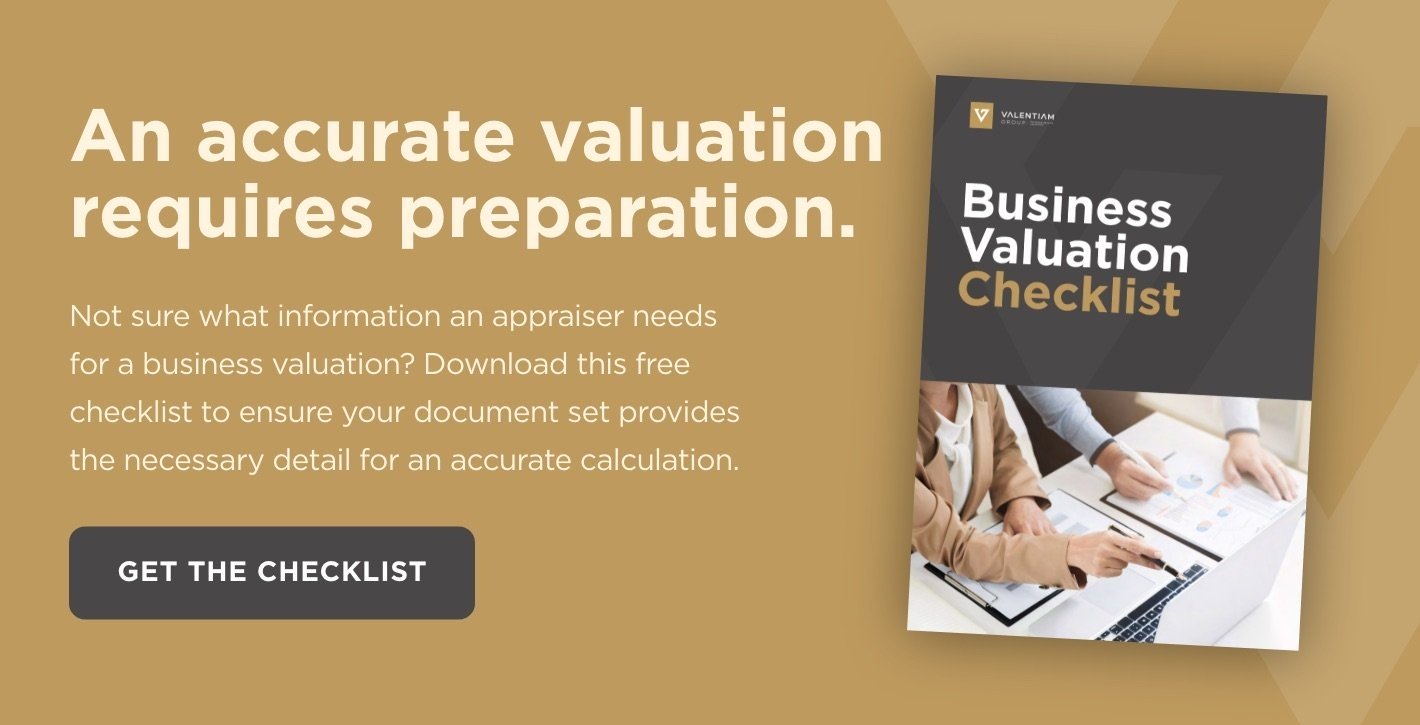Business Tax Liability: Everything You Should Know
Posted by Valentiam Group on February 10, 2021

Business tax liability is not a popular topic for business owners, but taxes are an unavoidable fact of business life. The management of tax liabilities can make or break a business, so it’s important to understand all of your business tax obligations, the relevant jurisdiction for each obligation, and the reporting and filing requirements for each type of tax.
In this article, we’ll examine what business tax liability is, explain the nature of tax liabilities and how to calculate the tax liability of a company, and provide some tax liability examples. We’ll also look at how business valuation and transfer pricing impact overall business tax liability.
What is business tax liability?
Business tax liability is the amount the business owes to federal, state, and local tax authorities. The different types of business tax liabilities include:
- Income taxes: Federal and—in most cases—state income taxes on business profits are levied on businesses. For businesses organized as C corporations, the business pays the tax; for pass-through entities such as S corporations, LLCs, partnerships, and sole proprietorships, the owner pays taxes on his or her share of business income.
- Employment taxes: Also referred to as payroll taxes, employment taxes are withheld from employees’ pay to cover the employee’s income tax obligations and their share of Social Security and Medicare (FICA) taxes. The business is responsible for paying the employer’s share of FICA, as well as federal and state unemployment tax. Self-employed persons, as in sole proprietorships, must pay both shares of the FICA tax on net earnings from the business.
- Sales taxes: In states with sales taxes, businesses that sell taxable goods and services are required to collect sales taxes on transactions and remit them to the state. Although the business itself does not pay the sales tax, there are penalties for failure to collect and pay it to the state.
- Excise taxes: Certain businesses may be subject to excise taxes for fuels, use of highways by trucks, and other activities.
- Property taxes: Businesses with real and personal property (and in some cases intangible property) are subject to property taxes. Tax liability is usually derived based on the value of the property multiplied by the tax rate of the jurisdictions that are allowed to tax it. Rules for valuation, what property is taxable, and tax rate can vary substantially among jurisdictions.
To determine the tax liability of a company, calculate the business’ obligations for each type of tax, and add them together to arrive at the total tax liability.
Each of the above examples of tax liabilities equal cash that the company has to pay out and can have a large effect on cash flows. For many businesses, tax obligations are one of their biggest line items, and if not properly managed, tax liabilities can eat up profits or even take down the business.
But if you plan ahead, prepare returns properly and file them on time, and take advantage of the deductions applicable to your business, you can reduce the amount of taxes your company must pay.
Need a business valuation to challenge a tax assessment? Download our free Business Valuation Checklist to learn what information is required to calculate an accurate value.
How To Minimize Business Tax Liability
The key to minimizing your company’s tax obligations is to make sure you are keeping the right records and receiving good advice about your tax strategy. Reducing the amount of taxes you pay is not about cutting corners but rather avoiding overpayment. Following these practices will ensure that you are maintaining the required records—as well as the records you need to support your deductions:
- Track income and expenses with accounting software
- Set up and follow procedures for keeping proof of expenditures (receipts, invoices, etc.)
- Categorize expenses and file receipts by category
- Create and adhere to recordkeeping policies for deductible expenses, such as business use of personal vehicles
Once you have a system in place to document income, expenses, and deductions, be sure to follow these practices as well:
- Prepare accurate returns
- File all returns and make all tax payments on time
- Take advantage of options to claim deductions and report income
Failure to pay tax liabilities in full and on time can result in interest, penalties, tax liens—even criminal prosecution. Avoid unnecessary expense (or worse) by paying and filing on time.
These are general practices all companies should follow to minimize taxes. However, there are some more complicated business situations that require additional reporting to meet all obligations.
Purchase Price Allocation
In mergers and acquisitions (M&A), the acquiring company must calculate a purchase price allocation (PPA), a fair value analysis of the acquired company.
In a PPA, all tangible and identifiable intangible assets of the acquired company must be valued and reported to investors and the IRS by both the acquiring company and the acquired company, with any residual value classified as goodwill.
The PPA will have an impact on income taxes, because it sets the initial tax basis and determines how each of the acquired company’s assets are taxed in the future. This initial tax basis for each asset then determines post-acquisition deductions that can be taken for depreciation and amortization. Failure to prepare an accurate PPA can ultimately affect tax liability.
Transfer Pricing
Companies that engage in intra-company transactions between subsidiaries or operating units must report those transactions to ensure that income is being properly reported in each country or tax jurisdiction where they conduct business. This reporting assures that every jurisdiction can accurately determine the company’s income subject to tax and prevent income from being improperly attributed to lower-tax jurisdictions.
A transfer pricing strategy, developed with the assistance of a transfer pricing specialist, will ensure a company is following all guidelines and meeting all reporting requirements—while at the same time, optimizing the strategy to minimize tax liabilities.
Valuation Of Tangible Business Assets
Companies with a lot of physical assets subject to property taxes may elect to have some or all of those assets valued to ensure that they are not being over-assessed (and overtaxed) on the value of physical assets in any particular jurisdiction. A professional business valuation can provide the data for challenging assessments and potentially reducing the taxable basis of the property.
Business property tax liability is determined by three factors: the tax rate formula, the assessment rate, and the assessed value of assets. The formula and assessment rate are set by the tax jurisdiction, usually a state and/or local government, and the value is set by the tax assessor.
Of the three factors, the taxpayer only has control over value. If an assessed value is inaccurate, the taxpayer can challenge it and possibly win an adjustment using the data provided by an asset or business valuation.
Monitoring the assessed value of physical assets is important because property tax rates frequently change. Property taxes fund local needs like schools and water infrastructure, and the rates fluctuate according to these needs. An over-assessment of value that isn’t costing much today could become a problem if the tax rate changes. An adjustment of assessed value might not lower the amount of property taxes due but instead protect the company from a tax increase when the rate changes. In either situation, making sure that assessed value aligns with actual value will prevent the company from overpaying on property tax and minimize its overall business tax liability.
Stay Abreast of Current Tax Law
Just as the property tax rate frequently changes, the tax code is constantly changing through IRS rulings, legislation, and court decisions. Some of these changes offer opportunities—but you must first know about them to take advantage of them.
For example, the Economic Stimulus Act of 2008 permitted businesses to deduct the full price of certain qualifying equipment purchased or financed during that tax year, rather than incrementally over several years. Limits on these deductions were also increased. The CARES Act, passed in March 2020, contained similar provisions. The Tax Cuts and Jobs Act of 2017 substantially changed the tax code. Changes include the rules around carry forward losses, lower corporate income tax rates, and many other changes that forced companies to completely rethink their tax strategy.
Businesses that don’t continually update their tax strategy throughout the year are likely to miss out on potential opportunities. Following any substantial changes to the tax code, it’s a good idea to seek an opinion from a professional tax planner who is up-to-date on tax law. A tax planner with this expertise may be able to recommend a strategy that would otherwise be missed—substantially reducing the business’ tax liability.
Other Ways To Reduce Business Tax Liability
Some standard tax rules can also reduce your overall business tax liability. Examples include:
- Making contributions to a retirement plan allows you to shelter income in a qualified retirement plan and provides the business with a tax deduction for contributions, while deferring taxes on contribution earnings.
- Adopting an "accountable plan" allows you to reimburse employees for business expenses without treating the reimbursements as income to those employees. This saves employees from being taxed on reimbursements while reducing company payroll tax obligations.
- Deferring income and accelerating deductions is easily accomplished by delaying billing (bills sent out in late December will likely be paid in January, deferring the income to the following tax year) or by paying bills due in January in December, so they can be taken as deductions in the current tax year.
- Ensuring your business is properly structured for tax savings. You may realize tax savings by changing from an LLC or S corporation to a C corporation structure since the first $50,000 of income will be taxed at a lower rate.
- Adding to employee benefits in lieu of giving raises to reduce tax liabilities. Rather than giving employees a $500 monthly raise, which will increase taxes on both the employee and the business, a company might elect to pay an additional $500 of the employees’ monthly health insurance costs. This will save employees on income and FICA taxes, as well as saving the company on FICA and unemployment taxes.
While tax liability may not be a favorite topic of business owners, staying on top of your tax obligations can have a positive impact on your bottom line. Ultimately, reducing your business tax liability is dependent on keeping thorough records, making tax payments on time, filing accurate reports and returns when due, and being aware of available opportunities to reduce your business’ tax liability.
Whether accomplishing this goal includes hiring a tax planner to be sure that you’re taking advantage of all deductions, or hiring a valuation expert to optimize your transfer pricing strategy or challenge property tax assessments, it’s important to seek out professional guidance, so you aren’t paying more than you owe. The assistance of a professional can easily pay for itself several times over if you keep in mind that every dollar not spent on taxes is a dollar added to your bottom line.
Need valuation or transfer pricing assistance to support your business tax strategy?
Valentiam has helped companies in a variety of industries limit their tax liability by optimizing their transfer pricing strategies and calculating accurate enterprise and asset valuations. We have extensive experience in performing valuations, and our transfer pricing specialists are recognized as among the best in the world.
Contact us to see how we can help your company with its valuation and transfer pricing needs.
Topics: Business valuation
Related Posts
EBITDA Multiples By Industry: An Analysis
EBITDA multiples by industry indicate growth, profitability, and stability of profits in various sectors—and are a quick and easy way to estimate value.
Valuation Methods: A Guide
Different types of business valuation methods are suited to specific needs. Here are the three primary types of valuation techniques and when they should be used.


